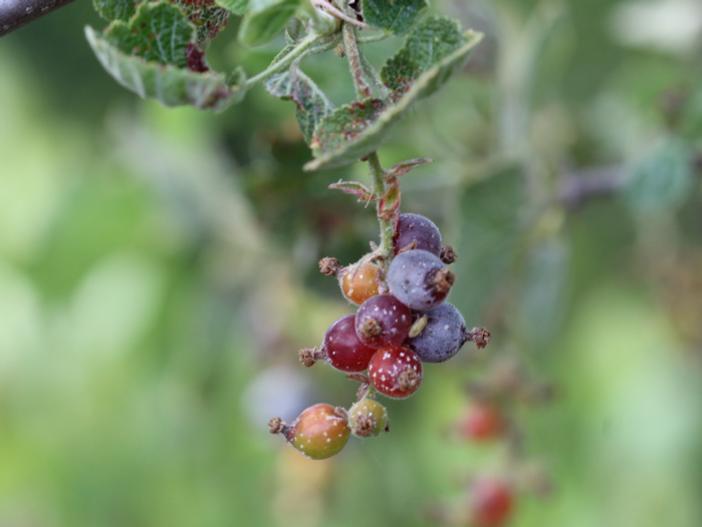Whiteflower Currant
(Ribes indecorum)
Whiteflower Currant (Ribes indecorum)
/
/

Photo by Easyscape
CC BY-SA 4.0
Image By:
Photo by Easyscape
Recorded By:
Copyright:
CC BY-SA 4.0
Copyright Notice:
http://creativecommons.org/licenses/by-sa/4.0/ | CC BY-SA 4.0






















































Estimated Native Range
Summary
Ribes indecorum, commonly known as Whiteflower Currant, is a deciduous shrub native to the coastal sage scrub and chaparral of California, as well as the northern regions of Baja California, Mexico. It typically grows to a height of up to 9 feet (approximately 3 meters), with an erect and spreading habit. The stems are covered in fine hairs and glands, giving them a fuzzy texture. The plant is notable for its loose racemes of 10 to 25 flowers, which bloom from late winter to early spring. The flowers are tubular, with white or pink-tinged sepals that open to reveal smaller, whitish petals. Following flowering, the plant produces hairy, sticky purple berries that are less than a centimeter in diameter.
Whiteflower Currant is valued for its early-season flowers and its ability to attract pollinators, such as bees and hummingbirds. It is a popular choice for drought-tolerant landscapes, native plant gardens, and wildlife habitats. The shrub is adaptable to various light conditions, thriving in full sun to part shade. It has low water requirements once established and prefers well-drained soils. While it is generally easy to maintain, it can be susceptible to pests like aphids and diseases such as powdery mildew. Gardeners should also be aware that the berries, although attractive, are not considered edible for humans.CC BY-SA 4.0
Whiteflower Currant is valued for its early-season flowers and its ability to attract pollinators, such as bees and hummingbirds. It is a popular choice for drought-tolerant landscapes, native plant gardens, and wildlife habitats. The shrub is adaptable to various light conditions, thriving in full sun to part shade. It has low water requirements once established and prefers well-drained soils. While it is generally easy to maintain, it can be susceptible to pests like aphids and diseases such as powdery mildew. Gardeners should also be aware that the berries, although attractive, are not considered edible for humans.CC BY-SA 4.0
Plant Description
- Plant Type: Shrub
- Height: 3-6 feet
- Width: 2-3 feet
- Growth Rate: Moderate
- Flower Color: White
- Flowering Season: Winter
- Leaf Retention: Deciduous
Growth Requirements
- Sun: Full Sun, Part Shade
- Water: Low
- Drainage: Medium
Common Uses
Bee Garden, Bird Garden, Butterfly Garden, Deer Resistant, Drought Tolerant, Fragrant, Hummingbird Garden, Low Maintenance, Rabbit Resistant, Showy Flowers
Natural Habitat
Native to coastal sage scrub and chaparral of California and northern Baja California, Mexico
Other Names
Common Names: White-Flowered Currant, White Chaparral Currant
Scientific Names: , Ribes indecorum, Ribes malvaceum var. indecorum, Ribes sanctae-barbarae,
GBIF Accepted Name: Ribes indecorum Eastw.